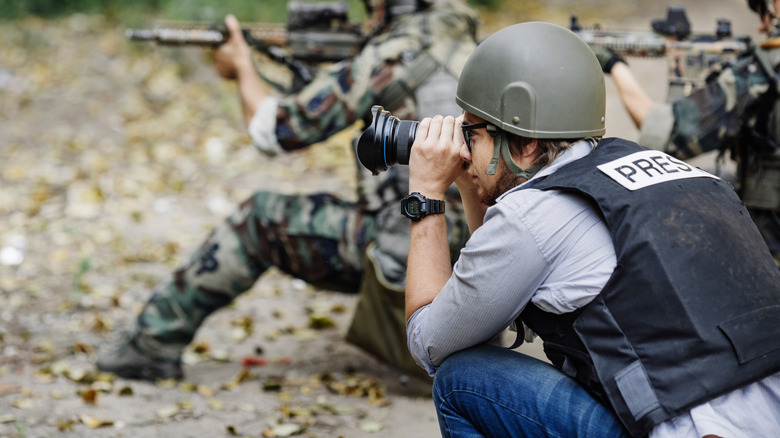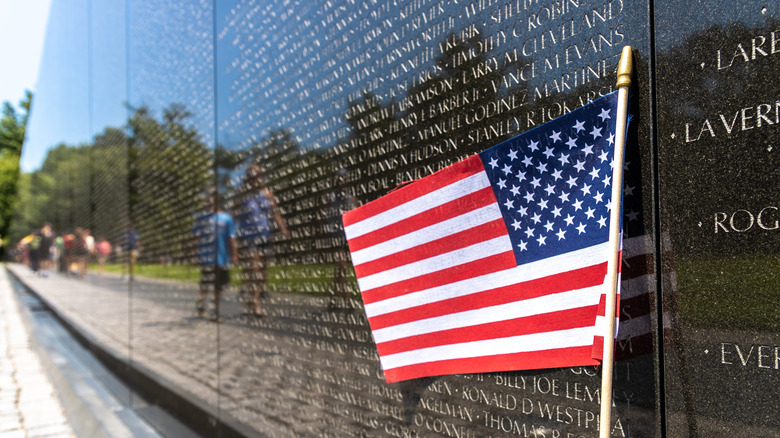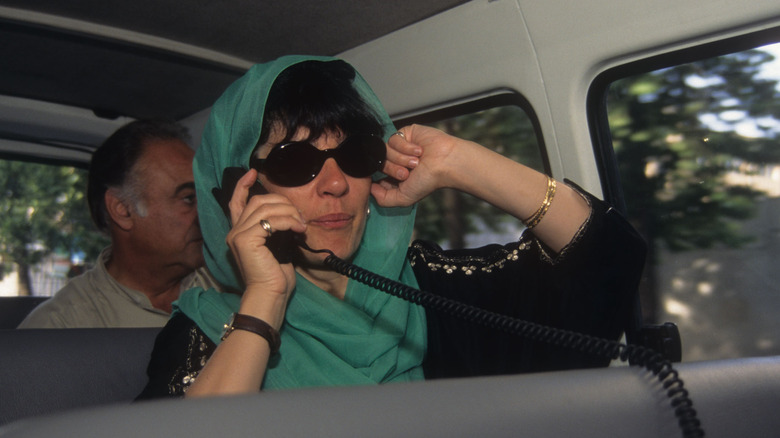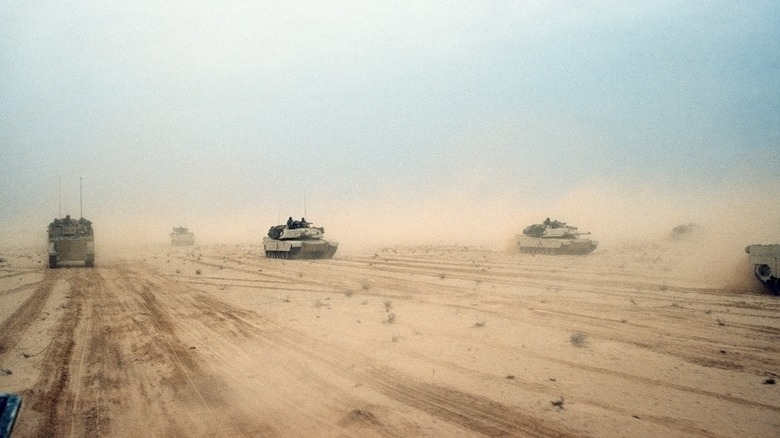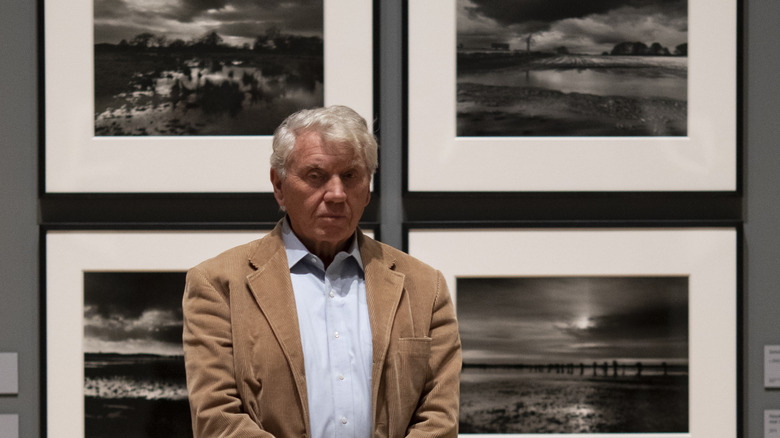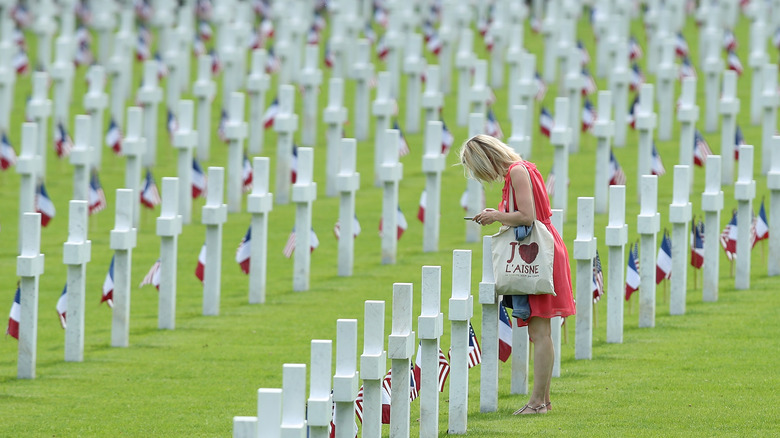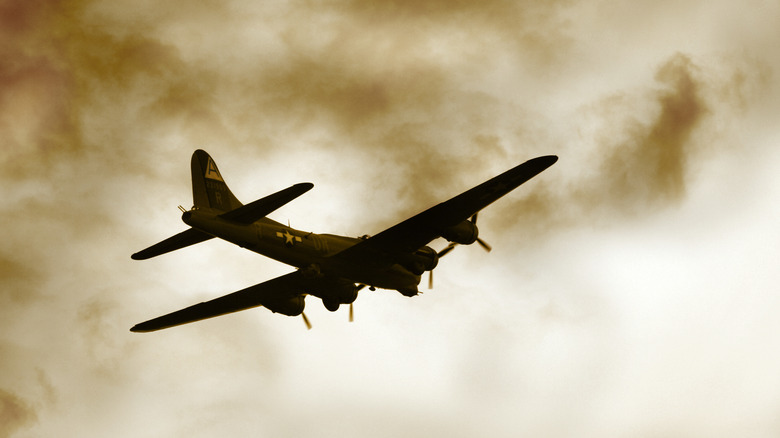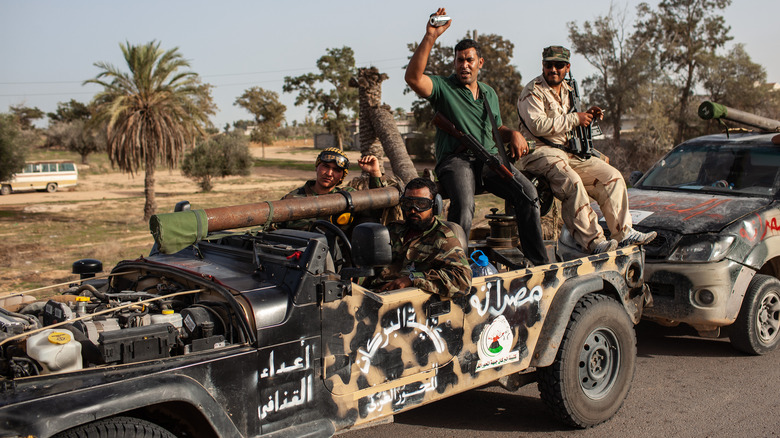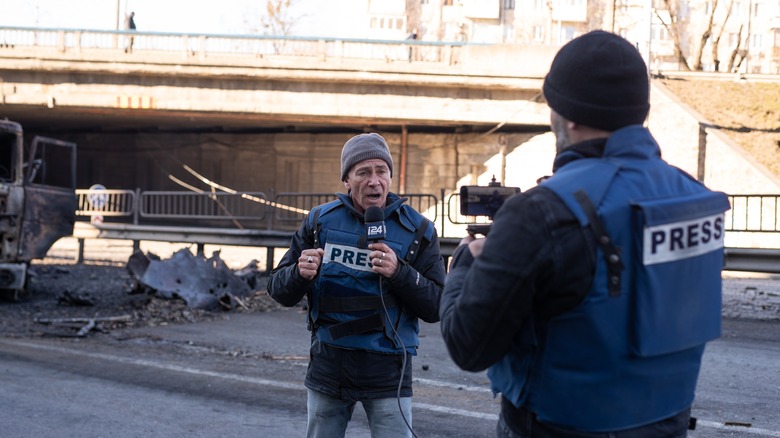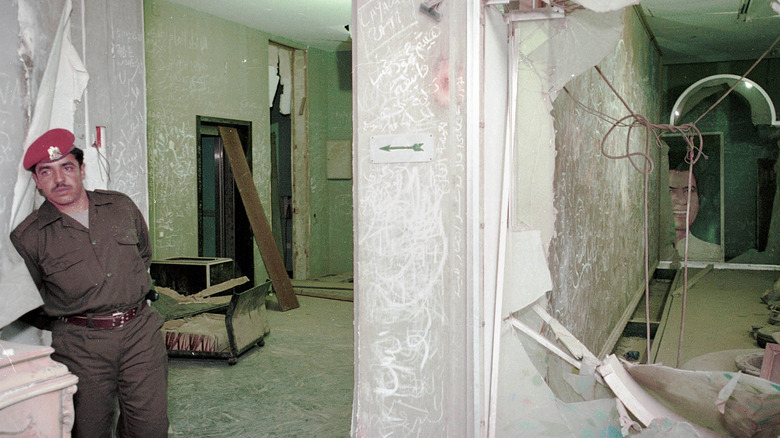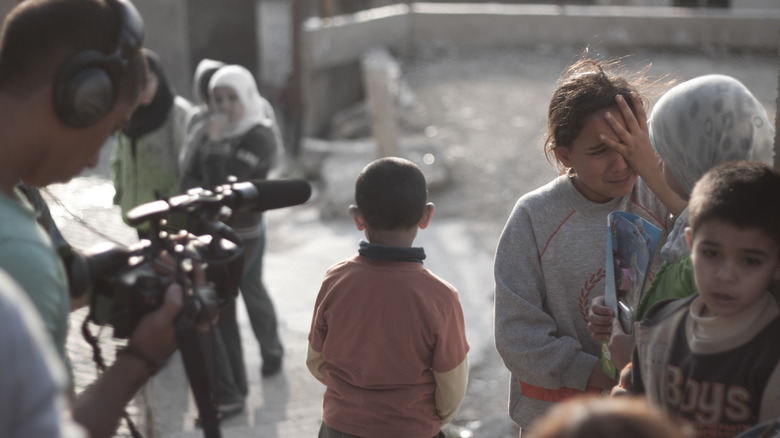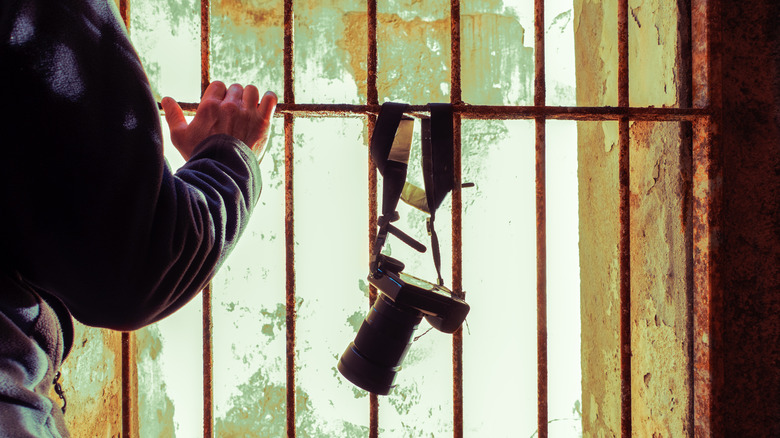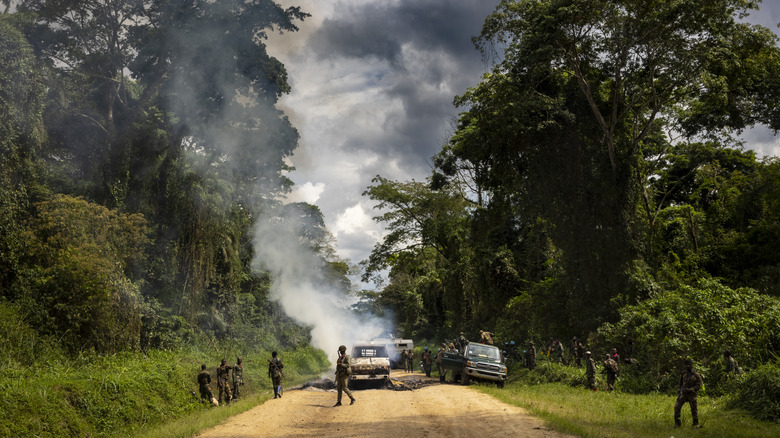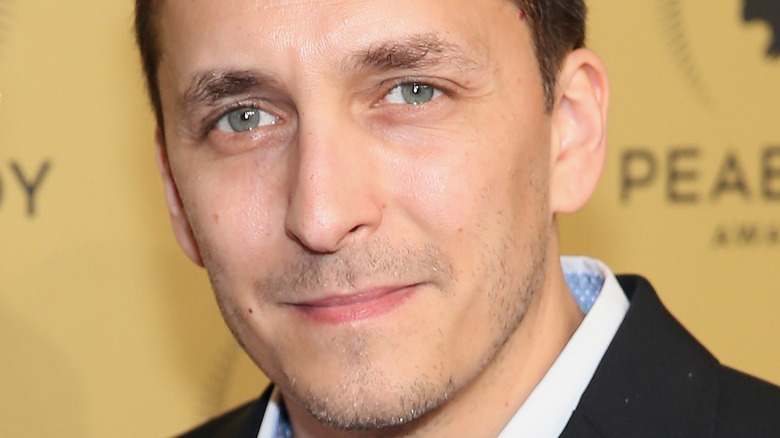What It's Really Like Being A Journalist In A War Zone
The life of a war journalist has changed dramatically over the centuries. One of the first modern war correspondents, Willem van de Velde I, lived in the 17th century and relied on handwritten notes and drawings to record naval battles play-by-play (via the Rijks Museum). Later, pioneers of photography like Matthew Brady and Alexander Gardner visited Civil War battlefields where they captured images that forever changed how Americans perceived war, per History.
Later war journalists such as Floyd Gibbons embedded with troops on the front during World War I, dodging strict censorship and bullets to get stories about the "Great War," per the National Museum of the Marine Corps. During World War II, a new breed of journalists like Andy Rooney and Walter Cronkite participated in the war effort, even firing artillery at enemy combatants (via the USO). And Joe Galloway brought the heroism and tragedy of the Vietnam War to vivid life, as reported by National Public Radio (NPR).
Although today's war correspondents have more technology to rely on than any previous generation, the risks and challenges of reporting on the frontlines of battle have never proven higher. The recent deaths of three journalists in Ukraine attest to this reality, as reported by ABC News. Here's what you need to know about what it's really like being a journalist in a war zone.
Working in the most conflict-ridden spots on Earth
News is where the action is, and in the case of war, the action involves live munitions, explosives, enemy combatants, and more. Today's war correspondents sometimes receive security training addressing everything from mitigating the risk of sexual assault to emergency first-aid courses, per the Committee to Protect Journalists. This training also helps journalists prep for encounters by having the right equipment, including lightweight body armor and helmets.
But as Vietnam war correspondent Joe Galloway found out firsthand, training only gets you so far when it comes to real-life battlefield situations, per NPR. At the age of 24, Galloway covered the fighting in the Ia Drang Valley from November 14 through 18, 1965. Accompanying the 1st Battalion, 7th Cavalry Regiment (via U.S. Army), he remembered the noise as deafening: "And the machine gun fire and the rifle fire and the rocket grenades of the enemy that pass through that company are landing on us" (as quoted by NPR). Glued to the ground, he couldn't move.
Then, he felt a toe in his ribs from the battalion sergeant major who screamed, "You can't take no pictures laying down there on the ground." Galloway jumped to his feet and his senses, snapping shots with his Nikon camera and deciding he'd rather go out on standing than belly crawling.
Surmounting infrastructural limitations comes with risks
All traveling freelancers deal with pesky problems like weak internet and poor cell phone connections. But in a war zone, surmounting infrastructural problems comes with unique challenges. According to the ICRC, "covering a war is becoming more and more dangerous for journalists." Satellite technology proves a critical tool used by war correspondents where internet and other modes of communication are impacted. The most well-equipped journalists travel with sat phones and satellite Wi-Fi hot spots (via the Committee to Protect Journalists). Using this technology can come at a high price, however.
Reporter Marie Colvin of America and photographer Rémi Ochlik of France found this out in Homs, Syria, in February 2012. Government shelling destroyed the building where they worked, killing them along with Syrian civilians. Tech experts believe the satellite technology the journalists used to transmit stories and images got them killed. They note that operations like "detecting radio emissions is relatively simple for a trained technician." Many easily accessible devices exist, commercially designed for tracking devices with built-in GPS services like sat phones.
Savvy journalists follow strict protocols when operating in a war zone. These include avoiding communication from the same location and any place where an evacuation might prove difficult. Experts also recommend keeping transmissions to no more than ten minutes and avoiding multiple-party transmissions from the same spot. Finally, journalists should remove the battery from any devices when not in use.
Navigating myriad interests
S.F. Crozier argues, "There can be few professions more ready to misunderstand each other than journalists and soldiers" (via Air University). But when it comes to serving as a war reporter, competing military interests represent just the tip of the iceberg. Newspaper editors want stories that sell, politicians want to look good in the public eye, and the intelligence community must avoid inadvertently releasing sensitive or top-secret information.
"Loose lips sink ships," and so do unrestrained journalists. To appease these varied interests, officials during the Gulf War placed what journalists like Christiane Amanpour saw as intolerable limitations, per the Public Broadcasting Service (PBS). She recalls one colleague's work getting censored because he mentioned a couple of fighter pilots looking at "girlie magazines." Amanpour notes, "Now, that is an example of censorship purely for image. It's got nothing to do with anything military, and I found that far beyond the rules."
Amanpour and her colleagues also felt hampered by the pool system, which required the equivalent of winning the lottery to gain access to on-the-ground reporting. This led to unusually reckless behavior on the parts of some correspondents like Bob Simon and his crewmates, who spent the entire conflict in an Iraqi jail after dodging the system and wandering unsupported in the country.
Knowing a picture is worth a thousand words
In 1666, Dutch artist Willem van de Velde I drew the "Four Days Battle off Dunkirk," a series of drawings recording a Dutch naval battle, per the Rijks Museum. De Velde understood the vital importance of war images, something modern journalists also take to heart. The most effective reporters either bring cameras or photographers to the battlefield, according to The Guardian. For example, photojournalism played a vital role in the Vietnam conflict, underscoring the devastating and confusing nature of warfare, per Time.
Don McCullin photographed a U.S. corpsman carrying a wounded child in a blanket, with villagers encircling him. Marines found the child wandering the front, searching for his parents. So, they took him into their bunker, cleaning him and tending his wounds by candlelight. Remembering the surprising transformation of battle-toughened soldiers into "the most gentle, loving persons," he recalls, "It was almost a religious experience for me to record this extraordinary event."
One of the reasons this moment proved so beautiful is because of the elusive nature of tenderness during a conflict. As famed war photographer Adam Ferguson notes, moments of sacred peace prove rare. He describes his role as a wartime image-taker in a word: helplessness. While first responders and soldiers scuttle around saving the wounded and turning the tide of battle, a photographer must remain a silent observer. He notes, "It can be agonizingly painful to think that all you're doing is taking pictures" (via The Guardian).
Remaining fearless in the face of fire
During World War I, war correspondents faced many challenges, from heavy government censorship to flying bullets and bombs (via Captain Jon Mordan's "Press Pools, Prior Restraint, and the Persian Gulf War"). Not only did censorship hit the "national scale," but the government went over reports from the front with a fine-toothed comb. The Espionage Act of 1917 provided officials with authority to prosecute reporters who communicated information construed as beneficial to the enemy. The act also prohibited reporters from interfering with the military.
The strictures journalists faced grew even more severe with the Sedition Act of 1918, which prohibited correspondents from writing anything critical of the government or the war. Despite challenges in court, both acts were ruled constitutional by the Supreme Court. In this atmosphere, it's little surprise war correspondents on the frontlines faced heavy censorship.
Despite that, journalists have risked their lives for their profession. Floyd Gibbons, a war journalist for the Chicago Tribune, traveled with American Marines, per the National Museum of the Marine Corps. As a journalist, he couldn't carry a weapon. Although he remained unarmed, that didn't keep him from losing an eye to a bullet while marching with the troops. Afterward, he lay in the field for three hours awaiting medical attention, yet he proved lucky compared to his companions at the Battle of Belleau Wood in June 1918. More Marines perished in this action than any other battle in the history of the Corps up to that point.
Lending a hand with the war effort
During World War II, censorship became embedded in America's governmental structures with the creation of the Office of Censorship. Made possible by the War Powers Act, it fell under the direction of the Office of War Information, which Captain Jon Mordan refers to as "the nation's official office of propaganda." As of 1942's Code of Wartime Practices, the censorship took on a voluntary nature except for material deemed "sensitive." This translated into heavy redactions of field reporting that proved consistent and organized.
The military and the media cooperated in unprecedented ways because "the government called for and received their cooperation to help win the war." Most correspondents remained far from the front lines in press camps. These included recognizable names like Andy Rooney and Walter Cronkite, per the USO. Not satisfied with remaining behind the lines, Rooney, Cronkite, and a group of journalists requested the chance to accompany flight crews.
After many weeks of persistence, they received the okay to hit the skies with American fliers. In celebration, they named themselves the "Writing 69th." Military officials insisted the correspondents have military training if something went wrong. Rooney and Cronkite later recounted they did have to participate, shooting at passing German fighters, and both returned in warplanes damaged by enemy fire, an authentic and sobering experience.
Embedding with military units proves unpredictable and dangerous
During the Afghanistan and Iraq wars, the Gulf War pool system gave way to embedded journalism, per the ICRC. Embedding with troops is far from a new phenomenon. As the name suggests, it involves moving with a unit for a given period, as Floyd Gibbons did with the Marines during World War I and Joe Galloway did with the 7th Cavalry during the Vietnam War. Both of their accounts attest to the extreme dangers embedded journalists face.
Marie-Lys Lubrano, 32, of France found these dangers out firsthand while embedded with rebels in Libya. Looking back at the experience, she attributes her survival to good fortune. She also notes that when you're traveling with a unit, you can't tell them you want to stop or opt-out because you don't feel comfortable going somewhere. She explained to GQ, "You just have to follow and shut your mouth."
With upticks in violence over the past few decades, some embedded journalists now hire private security to protect them. But since these guards are armed and willing to return fire, this approach "increases the confusion between reporters and combatants," according to Robert Ménard, secretary-general of Reporters Without Borders (via the ICRC).
Realizing a press badge is a target on your back
International law protects journalists (per the ICRC), stipulating they receive the same treatment as civilians on the battlefield. Protections afforded journalists fall into two categories: those traveling with armed forces and those working independently. These categories came about after World War II when war journalists sometimes wore military uniforms.
But an alarming trend has cropped up since the 1990s — the targeting of journalists. Once upon a time, international law protected war correspondents. While these laws haven't changed, the attitudes of combatants have. According to GQ, Scott Anderson reported on El Salvador in the 1980s, and it didn't get much messier than this war. Yet, he remembers slapping a press sign on his car and driving across the frontlines unhindered. Back then, the blue flak jacket that denoted journalists meant something.
But everything changed during the war in Yugoslavia, which felt more like mafia wars between regional factions than military actions. To the horror of journalists covering the conflict, combatants actively targeted them: "Blue jackets became like red rags to bulls." As groups within the Balkans realized they faced few repercussions for attacking the media, the flood gates burst open. Soon, war correspondents working engagements worldwide became more vulnerable.
Knowing you might become the story
Targeting reporters and photographers in wartime has changed the face of journalism significantly. That's why organizations such as the Committee to Protect Journalists go to great lengths to advise correspondents on the latest safety precautions and measures. For example, they recommend security training courses and stocking up on the right gear for the situation you'll be in. This often means investing in helmets, thin body armor, and other accouterments of a conflict scenario. Correspondents don't advertise their activities to enemy combatants, and they try to disguise their identities, per GQ.
Yet, war correspondents face hypocrisy when it comes to their efforts. While the mantra of the profession remains "No story is worth dying over," nothing sells newspapers better than the near-death experience or death of a journalist. Miles Amoore, 28, of the Sunday Times, learned this firsthand while covering the war in Libya. In August 2011, he got shot in the head by a government sniper in Tripoli. Fortunately, his Kevlar helmet protected him, and he continued stoically.
For his immense bravery in the line of fire, he was one of the first reporters to enter Gaddafi's compound a few hours later. But the incredible story he wrote after risking his life got sidelined on page three of the paper because the front page ran an article from another writer about his brush with death. The "star reporter" got upstaged by his own bravery, which makes a dangerous line of work downright thankless.
Making money isn't part of the game (for most)
Many of today's war journalists are freelancers, as reported by GQ. They don't receive the benefits, travel budgets, equipment, and salaries their full-time predecessors enjoyed. During the 1990s in Yugoslavia, Sebastian Junger remembers spending more than he earned while covering the civil war. He wrote pieces of little consequence for newspapers and radio stations and represented "'plankton' in the food chain." With the publication of "The Perfect Storm," which became a bestseller, he remedied the situation.
Looking back on the Balkans, Junger realizes it presented great opportunities for reporters on a shoestring budget. But this also meant cutting corners and not enjoying the resources and protections offered to those on salary at major news stations. Today's freelance war correspondents don't have money for insurance (via the Columbia Journalism Review) or fixers, let alone security training and proper gear. Of course, cutting corners means taking chances more established correspondents would never risk.
While you'd assume bravery pays off, war correspondent Francesca Borri sets the record straight, writing for the Columbia Journalism Review. Whether she's submitting a fluff piece about traveling Rome or sticking her neck out, embedded with Islamists in Syria, the pay remains $70 per article. She writes, "If you happen to be seriously wounded, there is a temptation to hope not to survive, because you cannot afford to be wounded." Junger had it right ... bottom of the food chain.
Kidnapping is a serious risk
As journalists have come into the crosshairs of violence, an uptick in media kidnappings has also occurred. According to GQ, awards, accolades, and admiration don't shield reporters from this harsh reality. U.S. MacArthur Foundation "Genius" grant awardee and Pulitzer-prizewinning photographer Lynsey Addario has spent her career documenting the news in troubled parts of the world. She's also focused heavily on the plight of women in warf scenarios.
Of course, reporting these events requires getting into the mix. For Addario, being in the thick of the action has resulted in two kidnappings. The first happened in Iraq in 2004, and the second took place in Libya in 2011. Fortunately, she escaped from both scenarios unscathed, but the experiences have stuck with her. They're the kinds of close calls that keep you awake at night.
Most ominously, they point to a deeper problem in journalism. War correspondents are no longer off-limits when it comes warfare, from hostage situations to bombings and shootings. Instead, Addario notes ominously, "No doubt about it, journalists are targets now." There's no one more qualified to make this statement.
Fixers can't fix everything
The savviest war journalists hire fixers to help them when things go wrong, which proves inevitable when traveling in war-torn nations. But even fixers can't fix everything, as acclaimed journalist Ed Caesar found out while reporting from a rebel-held portion of the Congo for GQ.
After being unequivocally told by his fixer that they traveled the safest road, he endured a car crash at high speed followed by tense negotiations with teen soldiers wielding automatics. And if that wasn't enough to get the blood and adrenaline flowing, in the distance, they heard gunfire heading their way. About this time, Caesar asked his fixer where he'd obtained such faulty information about the road. He replied, "I prayed this morning."
As Caesar points out, every choice you make as a journalist in a war zone could have irrevocable implications on your assignment and your life. While fixers come in handy in a tight pinch, nobody proves infallible. The nature of war remains highly unpredictable, with conditions on the ground quickly changing from moment to moment. Yet, perhaps the fixer's prayer did work. After all, despite his troubles, Caesar made it home to tell this story. Not all reporters prove this lucky.
Risking it all to tell the world what's happening
Despite the protections of international law and the precautions that many journalists take, death still stalks war correspondents. It's a hazard of the job. According to ABC News, the Russian invasion of Ukraine recently brought this to light after three journalists, Oleksandra Kuvshynova, Pierre Zakrzewski, and Brent Renaud, died on assignment.
Kuvshynova, 24, was a Ukrainian producer and fixer working as a consultant for Fox News. She died alongside Fox News cameraman Zakrzewski, 55, near Kyiv in the city of Gorenka on March 14, 2022. After shelling began, the vehicle they rode in exploded due to incoming fire. Benjamin Hall, a Fox News State Department correspondent, also accompanied them in the car, and he was hospitalized for his injuries. According to The Hill, Hall has now safely evacuated Ukraine.
This tragedy came fast on the heels of freelance journalist Brent Renaud's death on March 13, 2022. An award-winning filmmaker, Renaud was working on a documentary with Sugar23, Day Zero Productions, and Time Studios. Juan Arredondo, a photojournalist, accompanied Renaud and reported from his hospital bed that after crossing a bridge and reaching a checkpoint, troops opened fire. Renaud, Kuvshynova, and Zakrzewski join a growing list of war correspondents (both decorated and inexperienced) who have paid the ultimate price for a story. And this is, unfortunately, not new; per the Seattle Times, during the Syrian conflict alone, 54 citizen journalists and 23 professional journalists have risked it all (and lost) trying to tell the world what's happening.
